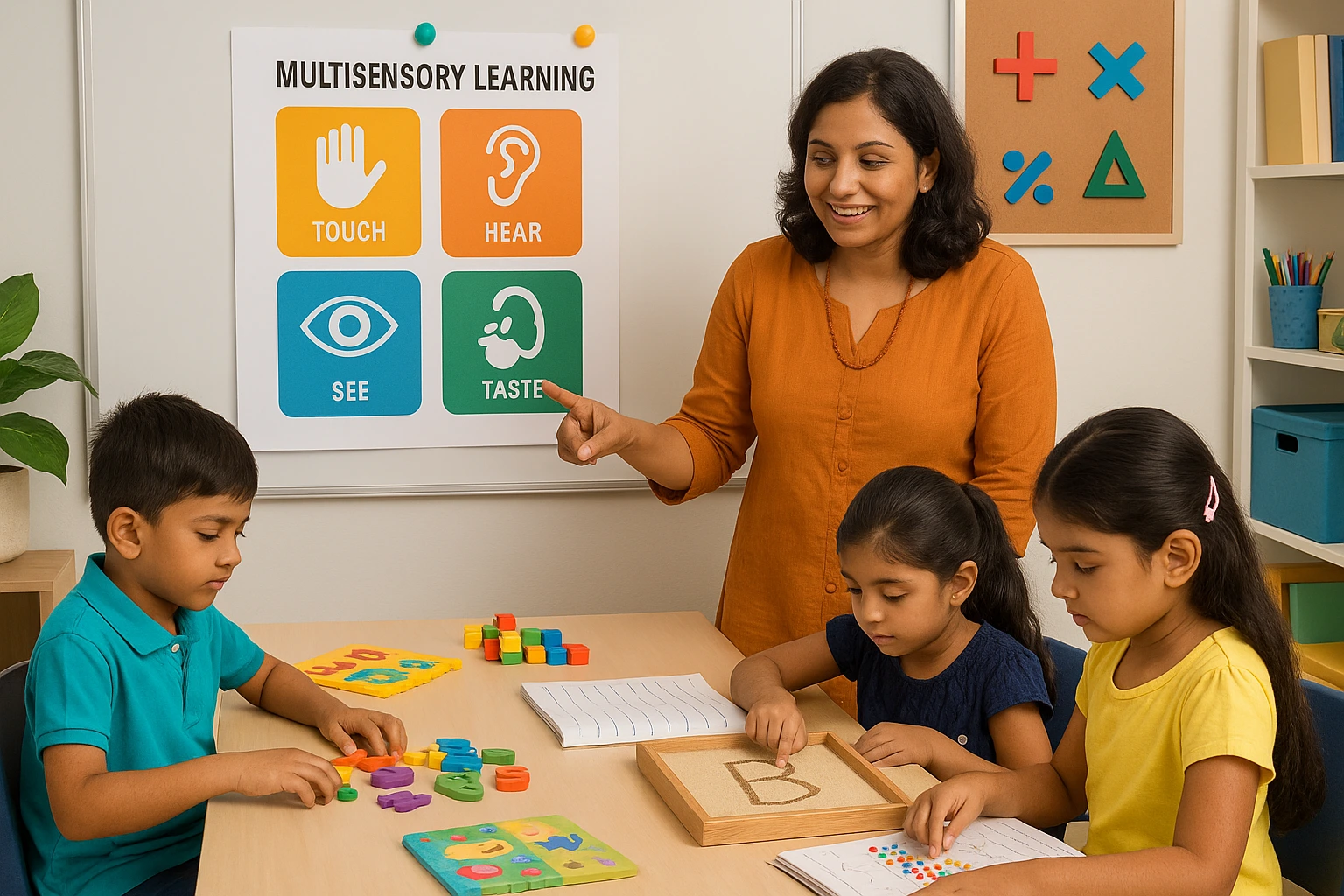What is the SLD Definition?
Source: hopetutoring
What is the SLD Definition?
SLD Definition means Specific Learning Disability, a diagnosis that affects how a person comprehends, processes, or reacts to information. It is not related to intelligence; it has more to do with how a brain receives and organises information. Common areas of suffering are reading, writing, and mathematics. Knowing the SLD Definition is key to determining appropriate teaching methods and strategies to assist people overwhelmed and burdened and contribute to academic success.
Table of Content
Types of Specific Learning Disorders: Dyslexia, Dysgraphia and Dyscalculia
Specific Learning Disorders (SLD) are learning difficulties that arise due to neurological issues, especially the poorly developed brain areas that control the essential skills of the child, including acquiring information, storing it and retrieving it for later use for mastering academic skills. For these reports, specific means that the disorder is not due to intellectual impairment or inadequate education. Dyslexia, Dysgraphia, and Dyscalculia are the three most common types of SLD. Each affects distinct areas of learning and will necessitate missional and purposeful interventions.
Dyslexia (Reading Disorder)
Dyslexia, a reading disorder, influences how the child reads, affecting his fluency of reading and how he speaks. The child fails to decode the words and cannot connect the letters to their corresponding sounds correctly.
- Confusion between letters and numbers that look similar, e.g. number 9 and P
- Reading unusual words is a struggle, and reading fluency is also slow.
- Spelling and writing remain difficult despite regular practice
- Reading comprehension can be weak due to the slow reading pace
Incorporating appropriate intervention strategies, consisting as phonics-based reading and using visual aids, can help to improve reading abilities.
Dysgraphia (Writing Disorder)
Dysgraphia, a writing difficulty, affects the fine motor skills of the child, including the finger grip, due to which writing in a legible manner is a huge struggle. Expressing their thoughts on paper and writing within a limited space is a struggle for children with dysgraphia.
- Illegible handwriting that cannot be read or understood properly.
- Find it difficult to write within a given space, or even the formation of letters can be a problem.
- Struggles with spelling and grammar
- Trouble translating thoughts into written form
Some assured strategies that yield the right outcomes include using writing software, giving the child additional time to finish their tasks, and incorporating a lot of art and craft activities that help to strengthen the child’s fine motor skills.
Dyscalculia (Math Disorder)
Dyscalculia, a mathematical disorder, hampers the math-related competencies of the child that making it difficult for them to remember important formulas, understand abstract concepts of time and money and perform simple mathematical calculations.
- Understanding abstract concepts of time and money is a big struggle.
- Even performing simple operations of addition and subtraction can be troublesome for the child.
- Trouble memorising multiplication tables
- Inability to follow multi-step math problems
Visual aids, hands-on activities, and repetition often help build number sense and improve mathematical understanding.
Each of these disorders requires a different support approach. Identifying the specific challenge is the first step in helping learners achieve their potential through targeted support and patient guidance.
To download the brochure of the LD Course, Click Here!
For more details on the LD Course, Call / WhatsApp at +919321024137 / +919869866277

Treatment: Getting Help
The most effective way to address learning disorders is by diagnosing them at an early age. During the early years, when the child is growing, there should be dedicated efforts taken to observe the child and identify if there are any missing developmental milestones. Early identification begins an early intervention plan that can make a huge impact on the child’s overall well-being.
Steps Toward Effective Support
Specific Learning disorder does not have a single proven method that fits all the challenges caused by it. A thorough observation of the child must be done to note their key strengths and weaknesses, and accordingly, intervention approaches must be designed to meet their specific learning needs.
Effective support calls for a total holistic plan that accommodates the various developmental domains of the child.
Specialized Instruction
Using teaching techniques that align with the learning preferences of the child and focus on the strengths of the child can be extremely helpful for handling the challenges of dyscalculia. Making use of tactile and sensorial approaches has proven to be highly useful in achieving the learning goals.
Individualised Education Plans (IEPs)
IEPS are excellent tools that are designed as per each child’s specific needs, and appropriate goals are set for the child based on their strengths. IEPS are specifically designed for children with SLD and include a wide range of accommodations such as additional time, use of tech tools and other benefits.
Remedial Therapy
Individual sessions with special educators help bridge academic gaps. Remedial teachers break down concepts into simpler steps, making learning manageable and less stressful for the child.
Counselling and Emotional Support
Without a doubt, the learning disability will indefinitely be a source of inadequacy, frustration, lowered self-esteem, and self-worth, and self-neglect, and therapy will assist them in how to cope. Many forms of therapy may be useful to parents as well in order to better assist the child.
Assistive Technology Use
Devices that offer speech recognition, audiobooks, and text-to-speech will greatly improve the reading and writing capabilities of the child.
Importance of Trained Professionals
Teachers and parents must understand the detailed nature of learning disorders. Professional training ensures the right intervention methods are applied from an early stage. The Learning Disability Course offered by Vidhyanidhi Education Society (Govt. Regd.) equips educators and caregivers with the skills to identify and support children with SLD effectively.
This Learning Disability Course is designed to cover the components of specific disorders, types of evaluations, techniques for teaching in a classroom, and modification of behaviour. It equips participants with the skills necessary to foster an inclusive and nurturing educational setting. It doesn’t matter whether you are a parent, a teacher, or a prospective special educator; this Learning Disability Course equips you with all the skills and information needed to create a positive impact.
Assistance begins with an understanding and structured support. With the appropriate assistance, a child with Specific Learning Disorders can learn to overcome barriers, cultivate their skills, and achieve educational and other success.
Empower special children with the right strategies! Join Vidhyanidhi Education Society’s LD Course today!
To download the brochure of the LD Course, Click Here!
For more details on the LD Course, Call / WhatsApp at +919321024137 / +919869866277
Learning Disability Course
FAQs
What is the Test for SLD Learning Disability?
SLD diagnosis uses psychoeducational tests: IQ, achievement, reading/writing checks, plus behaviour scales. Vidhyanidhi Education Society trains educators in these methods.
Why is it called Specific Learning Disability?
As Specific Learning Disability impacts the crucial learning or academic skills that are required for (reading, writing, math), it is called so, whereas the child’s intelligence level is just like any other normal child.





